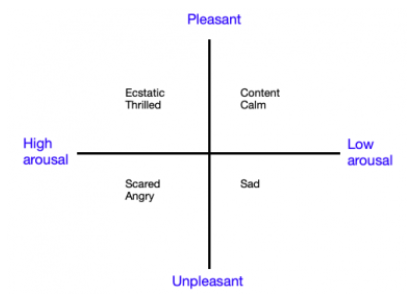It’s surprising how confused we can get by emotion.
Because we “feel” all sorts of things every day… Jealous, embarrassed, frustrated, anxious, excited, hungry, tired.
All types of feelings involve the body — they’re physical. Both our current and past experience forms our individual blueprint for what triggers emotions and how we interpret them.
“An emotion is your brain’s creation of what your bodily sensations mean, in relation to what is going on around you in the world.”
– Lisa Feldman Barrett, Neuroscientist
The elements of emotion
Emotions can be identified according to our level of arousal and whether the feeling is pleasant or unpleasant:

They fall into four main categories:
Joy
Sadness
Fear
Anger
We feel various intensities of these emotions in different ways and at different times. But many psychotherapists are agreed that the various versions of emotions stem from these four core categories.
Hormones and chemistry play a role in our bodily sensations – how often have you been snappy when hungry, or before your period?
But emotions are slightly different. They are generally about relationships, with our self, others and the world.
For a deep dive, login to our online platform and explore yours one by one.
Emotions - understanding, regulating and having them - I would argue are ultimately the key to strong leadership. So it's worth making some dedicated time to get to grips with them.